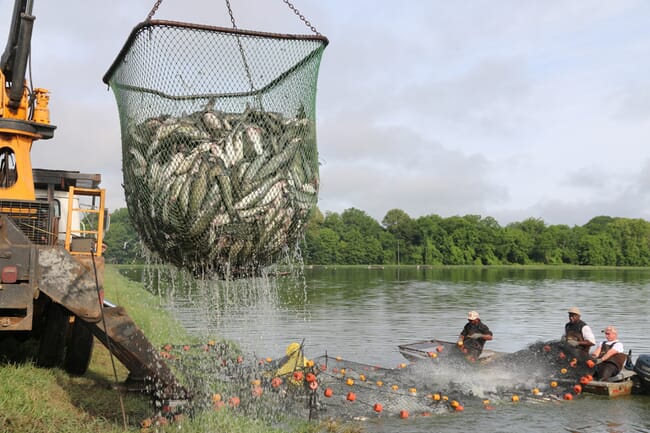Carole Engle, executive editor of the journal, chose Dissolved Oxygen and Aeration in Ictalurid Catfish Aquaculture, as it “addresses the factors that affect concentrations of dissolved oxygen in ponds, the relationship between fish feeds and oxygen budgets in ponds, oxygen as a limiting factor in fish well-being, and factors that affect oxygen uptake by catfish in ponds.”

© Auburn University
Engle particularly recommends the paper as it traces the history of aeration and aerator design for catfish farming while inter-weaving it with a discussion of relevant principles of mechanical aeration and summaries of aerator performance testing. And she also points out that it could have broad applications.
"While this review is based on many years of research in the US catfish industry, the detailed information presented is applicable globally to feed-based pond production of a wide variety of species,” she concludes.
Biofloc benefits
Meanwhile Louis R D’Abramo, section editor, highlights a paper on the nutritional contribution of biofloc to the diet of growout and broodstock of Litopenaeus vannamei. This covers a study that used stable isotope analysis to affirm the nutritional value of natural productivity for juvenile shrimp.
D'Abramo notes that the paper highlights: “Biofloc systems, whether pond- or tank-based, represent a management practice that permits intensive production of juvenile shrimp under efficient/sustainable practices. Biofloc derived nutrients persist in mature broodstock and are combined with other nutrients, specifically n-3 fatty acids from particular food resources, which are transferred to eggs and positively contribute to fecundity and hatching.”
“These results have the potential to serve as a foundation for guidance into the development of management practices that consist of the most effective combination of formulated feeds and BFT [biofloc technology] to yield the best possible nutritional sources (size and composition) for growth and pre-maturation. In addition, the application of the results derived from the study of ‘signatures’ of foods that make the greatest contribution to the composition of spawned eggs should help in the goal of achieving exceptional reproductive performance,” D’Abramo concludes.
Cryopreservation: standardisation is key
Finally, Chenhong Li, another of the journal's section editors, selects a paper that suggests that standardisation is the key to promote cryopreservation in aquaculture species, by Torres et al.
Addressing Reproducibility in Cryopreservation, and Considerations Necessary for Commercialization and Community Development in Support of Genetic Resources of Aquatic Species, notes Li, explains how cryopreservation is underused in aquaculture species, due to a lack of standardisation that has resulted in irreproducibility of successful techniques.
The paper provides recommendations and solutions to address this, including the need to formulate standard operating procedures, establish centres for training, and strengthen the role of scientific journals and reviewers.
As a result, Li concludes that the paper demonstrates how “standardisation is necessary to assure efficient transition to commercial-scale application and repository development of cryopreservation of aquaculture species. Once fully fledged, the application of cryopreservation would greatly promote development of repositories of germplasm of aquaculture species and protection and sharing their genetic resource.”




